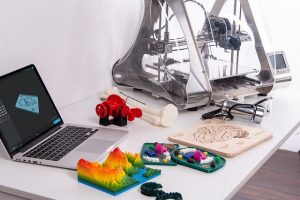
It’s not uncommon for 3D printers to drip or leak filament. In fused deposition modeling (FDM) — the most common type of 3D printing — the nozzle at the end of the 3D printer’s head will release filament to build the desired object. The nozzle is typically heated, thereby lowering the viscosity of the filament. As the filament becomes less viscous, it’s more susceptible to leakage. Retraction, however, is a common technique used to prevent unwanted filament from leaking out the nozzle.
What Is Retraction?
Retraction is a feature found in many 3D printers that’s designed to optimize the amount of filament the nozzle releases as well as the speed at which the nozzle recoils. It’s called “retraction” because it “retracts” unwanted filament from the nozzle. Once the specified amount of filament has been released by the nozzle, the 3D printer will “retract” any additional filament that’s released.
While different 3D printers have different retraction settings, most of them support the following modifications:
- Filament distance: This setting allows you to control the amount of filament released by the nozzle.
- Recoil speed: Also known as retraction speed, recoil speed dictates how fast the nozzle retracts unwanted filament.
- Minimum displacement: As the name implies, minimum displacement is used to control the minimum length of the filament for the retraction to occur.
Why Retraction Is Important
3D printers feature retraction to prevent unwanted filament from leaking or oozing out the nozzle. A phenomenon known as stringing, the presence of this excess filament disrupts the finished object’s size and dimensions. As the unwanted filament drips out of the nozzle, it will land on the object.
Retraction prevents stringing by pulling unwanted filament from being released by retracting it. It essentially stops the melted or semi-melted filament from coming out the nozzle. Once blocked, the object will remain naturally protected against stringing.
Keep in mind that using the wrong retraction settings on a 3D printer may yield negative results. If the filament distance is too high, for example, the nozzle may clog. Alternatively, the 3D printer may take longer to release the filament. By using the right retraction setting, though, this shouldn’t be a problem.
In Conclusion
Retraction is a common feature found in 3D printers that’s used to control the amount of filament released by the nozzle as well as the speed at which this unwanted filament is retracted.
Learn more about Monroe’s Additive Printing Service or get your parts printed now!
No tags for this post.
